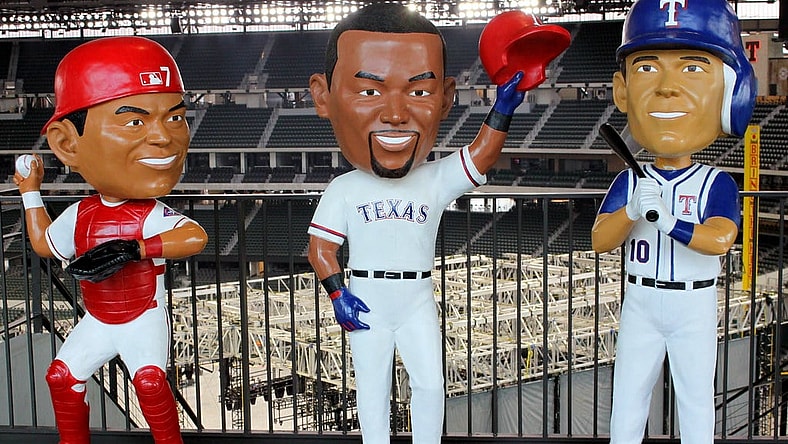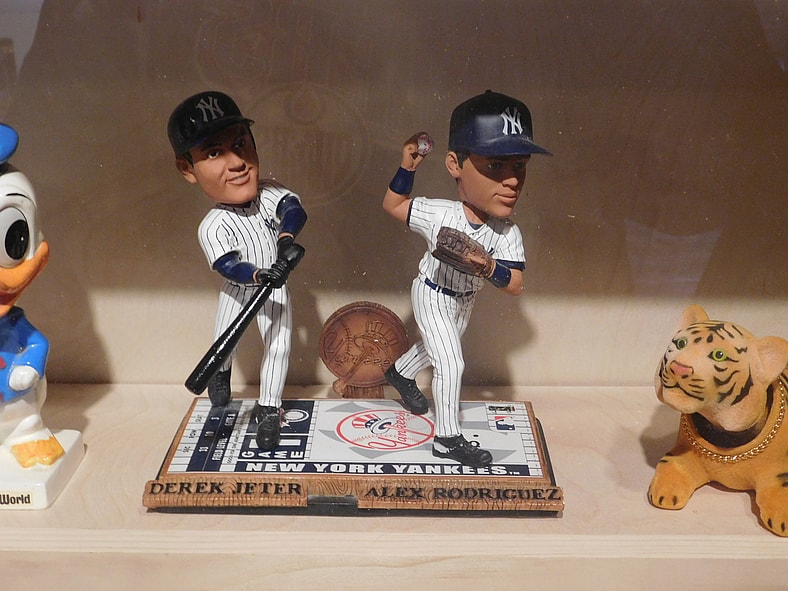
While stadium giveaway bobbleheads are often seen as cheap souvenirs, the collectible has slowly become one of the more accessible corners of the sports-memorabilia market.
Some of these figures, such as Derek Jeter and Sammy Sosa, can even garner hundreds of dollars on the secondary market for just one figure.
With many factors contributing to the rise in value, keep reading to learn more about stadium bobbleheads and their value to the collecting community.
Related: 8 Forgotten Fast Food Toys That Are Worth Hundreds Today
Why Stadium Bobbleheads are Valuable
Major-league clubs often publish promotional calendars that feature bobblehead nights and other giveaways featuring the team’s logo. For instance, the Los Angeles Dodgers have a detailed list of promotional releases.
Why is this important to bobblehead value? It provides a distinct release date and primary record for collectors, so they know the provenance of what they are buying.
The verification is especially helpful when discovering bobbleheads that were made in small batches, making some of these stadium bobbleheads more valuable compared to mass-retail collectibles.
Factors Contributing to Value

Provenance isn’t the only way to increase the value of stadium bobbleheads. Iconic players such as Derek Jeter or Kirby Puckett increase the demand regardless of the production numbers of the bobblehead. Some of Jeter and Puckett’s bobbleheads can go for up to $250.
Other bobbleheads can be notable because of controversy or singular achievements, or figures tied to World Series fans, such as Josh Beckett and Randy Johnson.
Check Out: The Impact of Trading Cards on Sports, Entertainment, and More
Secondary-Market Values are Fluid
With all that being said, collectors should still be mindful and educated when it comes to secondary-market values. They are often fluid, and the best way to find the right price is by checking out completed auction records on platforms like eBay.
Specialist shops and retailers will sometimes confuse the numbers, too, as a licensed retail release should not command the same value as a genuine stadium giveaway bobblehead.
While you can have a baseline price, a lot of it is determined by condition, original packaging, presence of SGA stickers or edition numbering, and whether the item is, in fact, a giveaway.
Collectors’ databases and fan sites are the best places to look when figuring out a stadium bobblehead’s value. Always make sure to check multiple sources to confirm the year, design, and edition of each stadium bobblehead.
Advice for Stadium Bobbleheads

If you ever happen to find one of these stadium bobbleheads while cleaning out the attic, confirm what type of bobblehead you have before listing it. Check the item against team promotional schedules and collectible registries to verify exactly what type of stadium bobblehead you have.
Distinguishing marks are particularly helpful, such as an SGA sticker, numbered base, or accompanying card. Take clear pictures of the item and any damage that may be there to figure out the best value possible.
However, you must also consider nostalgia in the price, as some buyers may purchase for a higher price based on the memories or events tied to a particular bobblehead.
Also Read: 1975 Topps Uncut Sheet at the National Sets the Example for Determining Value
In Conclusion
Stadium bobbleheads are worth way more than throwaway memorabilia you get at a game. They are time-stamped artifacts of a team shaped by provenance, condition, and the stories connected to them.
If you happen to find one of these collectibles in your attic, or want to expand your collection, always make sure to use lots of research to find the best price and the best value in whatever piece you choose, because there is probably somebody out there who would pay good money for a stadium bobblehead.


